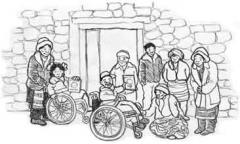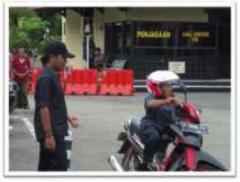Your progress
0%
Here are some of the key ideas you need to understand in order to support the formation and success of self-help groups.
Use your mouse or keyboard to expand each of the headings below.
Some common characteristics of self-help groups that are associated with CBR:
| Notes | |
|---|---|
|
They are run by and for group members, have regular meetings, and are open to new members. |
|
Example problems:
|
|
Goals originate from the needs of group members and are known and shared by all members. |
|
Regulations and guidelines inform members how to work effectively together. |
|
Participation involves getting help and sharing knowledge and experience |
|
Each member has a clear role and contributes his or her share of resources to the group. |
|
Each member has a vote on all decisions taken in the group |
|
An external facilitator is used only if necessary in the formation of the group. |
|
|
|
Group members are volunteers, in the sense that they are not paid, but they work systematically and regularly to resolve their common problems through mutual support.
Within the context of CBR, self-help groups usually comprise people with disabilities and their families.
These groups are usually small, but over time, they may grow and include more than 20 members. Small groups enable effective participation of all members in discussions and decision-making, whereas larger groups may have more power and influence.
CBR personnel may be required to take on a facilitator role, particularly when new self-help groups are being formed. CBR personnel can provide guidance to ensure chosen leaders do not dominate the group; they can prevent the hijacking of benefits by some individuals, keep the group motivated, and provide training on different aspects of group functioning
It is not necessary to be a person with a disability to work with people with disabilities, but the shared experience of discrimination may strengthen understanding and empathy between an external facilitator and a group. A facilitator with a disability may also be a role model for other people with disabilities in the group.
See how a self-help group managed to change community attitudes in China’s autonomous region of Tibet


The CBR project in the Tibet Autonomous Region, People’s Republic China, works with parents of children with disabilities to discover new ways of responding to their children’s needs. These parents identified that prejudicial attitudes and discriminatory behaviour directed towards their children was a priority issue because it prevented their children from attending school, and it was uncomfortable taking their children into the community. CBR personnel saw the potential benefit that a self-help group would have for this group of parents. A couple of parents decided to create a self-help group and started by focusing on raising public awareness about disability. They held these awareness sessions in local tea houses.
As the parents came to rely upon one another, and drew increasing comfort from sharing their similar experiences, the group grew from two to 12 members. The community was positive and slowly their attitudes began to change, with many community members offering support (e.g. through donating wheelchairs) during these awareness sessions. This was a great source of encouragement.
The self-help group has slowly branched into other activities with the support of CBR. It has:
| Notes | |
|---|---|
|
The CBR provided the initial grant and business training. |
|
The CBR programme provided training on simple rehabilitation activities, and CBR personnel accompanied group members on home visits, to slowly build their capacity and confidence levels. |
The success of this self-help group has inspired others to form similar groups.
Many groups have been formed for and by individuals with similar impairments.
While single-impairment groups have a clear and well-defined purpose, often cross-impairment groups may be more frequent in smaller communities.
The basic needs of people with disabilities are the sameas everyone else: food, shelter, health care, education, and this is independent of their impairments.
Learn about the successes a cross-impairment self-help group was able to achieve on the island of Java in Indonesia


The CBR Development and Training Center (CBR-DTC) in Solo, Central Java, was asked by Netherlands Leprosy Relief to develop self-help groups that include – but are not limited to – people affected by leprosy. Eventually about 100 people with disabilities were identified and agreed to become members of Difabel Slawi Mandiri (DSM). About 25% of these members are affected by leprosy.
Capacity building was provided on equal rights, advocacy, leadership, socio-economic development/microcredits, and more. Saving and loan systems were started. In addition, DSM members started to contact local stakeholders from government, university and other service providers.
Eventually a ‘Disability Forum’ was established. Important district stakeholders were included in the forum, which is supported by the regent of the district. Within the next two years, the group managed to obtain access to a long list of services and programmes that previously were not accessible for persons with disabilities simply because nobody in the government had thought of them.
Self-help groups and disabled people’s organizations can look different in different countries, and sometimes it can be difficult to distinguish the two. For example, in many countries self-help groups are also known as disabled people’s organizations, especially where they have joined together and become umbrella organizations.
In the CBR guidelines:
Self-help groups are defined as groups that:
Disabled people’s organizations are defined as organizations that: